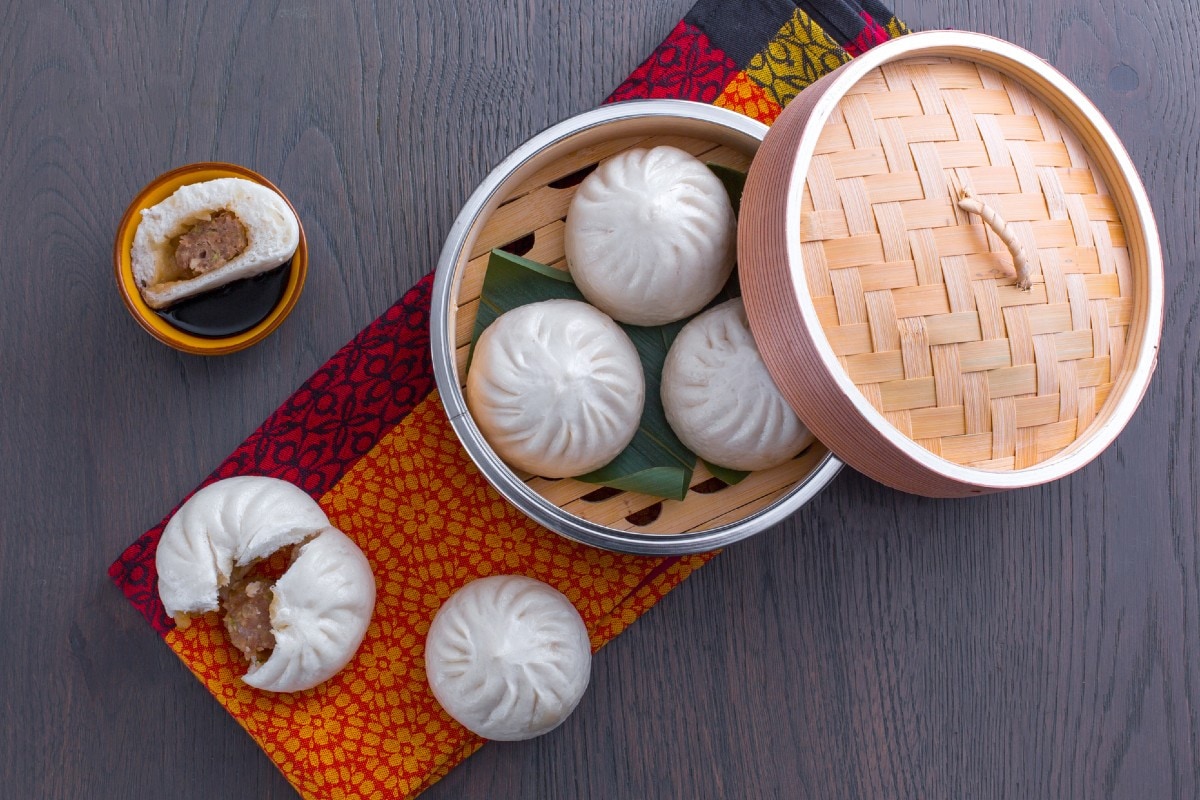Chinese Steamed Dumplings
- Difficult
- 1 h 10 min
- Kcal 439

Legend has it that they originated in China thousands of years ago, but their deliciousness is a fact, as baozi are now popular and appreciated all over the world! These lovely steamed buns are consumed as snacks at any time of day, including breakfast (just like steamed dumplings), and are considered one of the most loved Asian street foods. The dough, soft and delicate, is very similar to that of mantou, while the filling can be made of meat, vegetables, shrimp, or even sweet. Chef Guglielmo Paolucci offers us the version with pork, napa cabbage, and scallions, emphasizing that one of the fundamental characteristics of baozi is the right proportion between the amount of filling and dough so that each bite is well balanced. Following the movements of his hands, we will also discover how to close them perfectly! Don't be intimidated if you initially feel a lack of manual skills... enjoying one baozi after another, we are sure that in the end, you will also become true experts!
Don't miss these other Chinese cuisine specialties:

To make the baozi, first prepare the dough: pour the water into the bowl of a stand mixer fitted with a hook attachment 1, add the dry yeast 2, and briefly stir with a spoon to dissolve it 3.

Add the wheat flour 4 and sugar 5 and run the mixer on low speed for 5-6 minutes 6.

When the mixture is compact 7, transfer it to a lightly floured work surface and briefly knead to form a smooth, round shape 8. Place the dough in a bowl, cover with plastic wrap 9, and let it rest at room temperature for about 40 minutes.

Meanwhile, prepare the filling: remove the central rib of the napa cabbage 10 and chop the leaf 11, then finely chop the scallion 12.

Peel and chop the ginger, or alternatively, you can grate it 13. In the bowl of a stand mixer fitted with the paddle attachment, add the napa cabbage, scallion 14, and ginger 15.

Add the ground pork 16, sugar 17, salt, and pepper 18.

Finally, season with sesame oil 19 and soy sauce 20 and run the mixer on low speed for 5 minutes, until the ingredients are well combined 21.

After the rising time 22, transfer the dough to a lightly floured work surface and, after kneading briefly, divide it into 3 portions with a dough scraper 3. Stretch each portion with your fingertips to form rolls 24 .

Make quick folds 25 26 and stretch the rolls again, then cut them into 1.25 oz pieces each 27: it is important to weigh the dough to ensure the right proportion between dough and filling.

Roll each piece of dough on the work surface to form a ball 28, then flatten it with the palm of your hand. At this point, take a small rolling pin and press it on the edges of the disk with your right hand while rotating the dough counterclockwise with your left hand 29; this way, the edges will be thinner while the center remains thicker to better hold the filling juices 30.

Proceed this way with all the dough disks, then divide the filling into 0.88 oz portions each. Add a portion of filling to the center of each disk 31 and spread it slightly with a teaspoon. To close the baozi, flour your fingers well to prevent the edges from getting wet: keep your thumb fixed on the edge of the dough 32 while pinching and pulling the rest of the dough with your index finger 33.

Once you reach the end, pinch the top and rotate the baozi with your hand to seal it 34, then rotate it on the work surface to round it 35. As you form the baozi, place them on squares of parchment paper that you have previously arranged on a baking sheet. When they are all formed 36, cover the baking sheet with plastic wrap and let rise at room temperature for 40 minutes.

After this time, you are ready for cooking: bring water to a boil in a steamer and place the baozi along with their parchment squares 37. Cover with the lid and steam for about 12-13 minutes. Once cooked, turn off the heat and let them rest in the pot for another 2 minutes, then transfer them to the traditional bamboo basket 38. Your baozi are ready to be served 39!